An iconic symbol of youth and car culture during the ’50s, ’60s and ’70s was the drive-in restaurant. Popularized during a thriving post-war economy, the baby boom and the rapid growth of car ownership, drive-ins typically featured large parking areas and little or no indoor seating. Menus, visible from your car, displayed inexpensive meals which included burgers, chicken and fries. In contrast to the modern “drive-thru” concept, many drive-ins were self serve, where you walked to a window, ordered and picked up your food and took it back to your car. Others provided car service, your order taken and food delivered to your car by staff known as “carhops” who would attach a tray to your window with your meal on it. “Lights On For Service!”

The first known drive-in, Kirby’s Pig Stand, was built in Dallas, Texas in 1921 and was described by critics as for people who were “too lazy to get out of their car and enter the restaurant.” In British Columbia, the first White Spot drive-in opened in Marpole in 1928, a brand which pioneered the use of carhops and window trays. Drive in architecture often featured round or polygonal buildings which allowed vehicles to park around the building giving easy access to cars. Some buildings would include eye-catching features or rooflines and large colourful signs to entice customers into their lots. Kitchens were usually laid out in an efficient manner allowing quick production of meals and were sometimes visible from inside or outside the restaurant. Drive-ins could be single small businesses or larger regional chains with multiple locations. Some evolved into huge national and international brands which are still around today.
The Seabright
Richmond’s first drive-in style restaurant/snack bar was the Seabright. It was built and run by the Doherty family, owners of the Seabright Dairy on Sea Island and was positioned to give customers a good view of aircraft landing and leaving from the new Vancouver Airport, a popular attraction in the 1930s. The building was about 40 feet by 24 feet in size and an eight-foot wide veranda gave customers some covered space. Soft drinks, homemade ice cream and milkshakes, tea, coffee and sandwiches were offered for sale at the building on Buckingham Road and plenty of parking was available in the 240 by 70 foot parking lot.

The Garden City Drive-In
Around 1954 a restaurant opened at 802 Garden City Road (8020 today), near the intersection with Blundell Road. The Garden City Drive-In was owned by Marg and Marc Champoux and offered dining room or car service. By 1960 it had become Wong’s Garden City Drive-In, offering a selection of Chinese and Western dishes with dining room, car service or free delivery.
Sometime during the 1960s the drive-in was renamed the Richmond Drive-In, a name it had until about 1973 when it became Wah Do Restaurant.
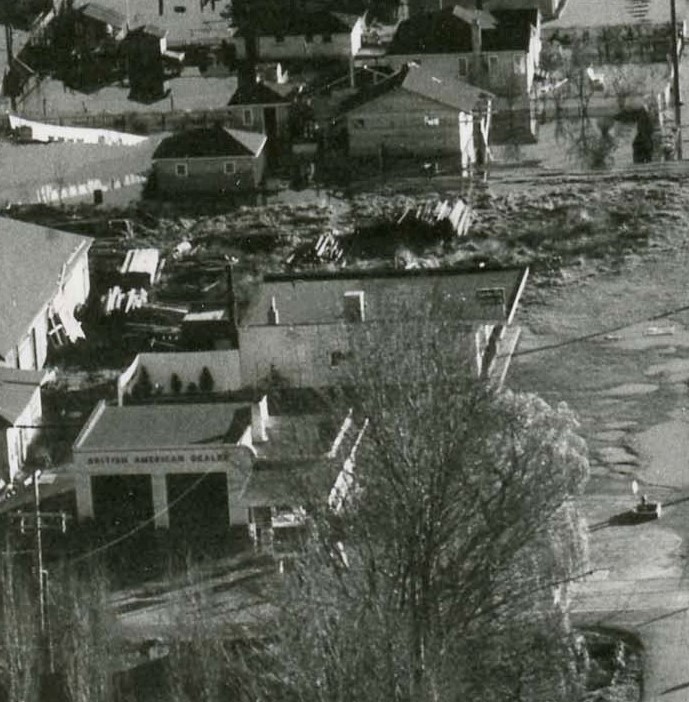


Around 1975 the restaurant was closed and demolished to make way for construction of the Garden City Shopping Centre.
The Dairy Queen
On September 5, 1958, Ray Van Humbeck opened his new Dairy Queen ice cream business at 633 No.3 Road (6331 today), a standard drive-in design with a large parking lot and free standing sign featuring an ice cream cone to attract customers. He offered a free sundae, milk shake or malt with every one purchased at regular price on opening day. Dairy Queen products were “favourites for people like you in 2500 cities throughout Canada, the Commonwealth and the United States. They enjoy it as a treat for taste – a food for health!”, stated his ad in the Richmond Review.


Ray Van Humbeck was a local businessman who believed in giving back to his community. He supported many community initiatives, including sporting events and sponsored a softball team for many years.
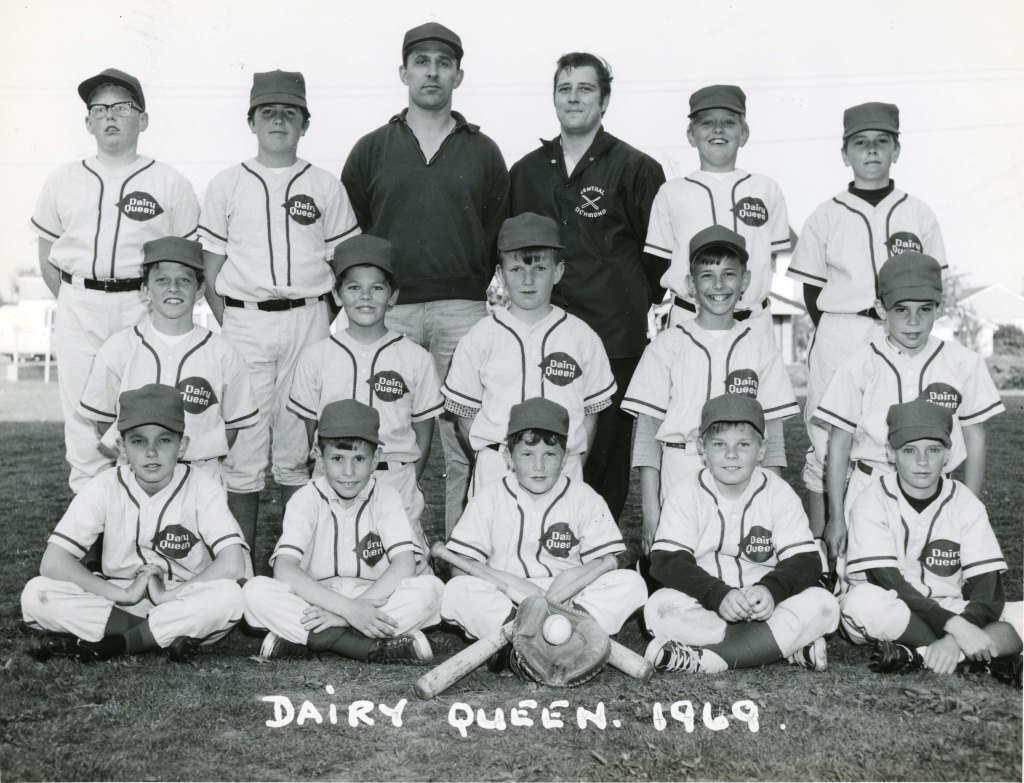
Starting out as a business selling soft frozen dairy products in Joliet, Illinois in 1940, the Dairy Queen brand grew and spread; the first Canadian store opening in Estevan Saskatchewan in 1953. The product line evolved and expanded from sundaes, shakes, malts and banana splits to include such favourites as the “Dilly Bar,” “Buster Bar,” the “Scrumpdillyishus Peanut Buster Parfait” and the “Blizzard.” The franchise’s menu made a significant change when hot “Brazier Foods” became available, cooked in the trademark “Sizzle Kitchen.” Mr. Van Humbeck’s No.3 Road Dairy Queen changed along with the times, receiving new signage and a raised red roof along the way.

Around 1974, Ray Van Humbeck closed the business on No.3 Road and relocated to the Anderson Square Shopping Centre, occupying three units where Anderson Road met Buswell Road. The business became a fixture there until it closed in 2016. Today there are three Dairy Queen stores in Richmond, one at No.3 Road and Francis Road, which was relocated from the Buswell and Anderson location, one at the Minato Village at Steveston Highway and No.1 Road and one located in the food fair in Richmond Centre Mall, not far from the location where Mr. Van Humbeck opened the first one in 1958.
Chipper’s Drive-In
In January 1957 an application was made for the sub-division and rezoning of a property on No.3 Road to allow the construction of a meat packing plant for the B.C. Chip Steak Co. Ltd. and a drive-in restaurant. The application was approved and the plant and drive-in, known as Chipper’s, opened at 331 (3311 today) No.3 Road in July 1958.
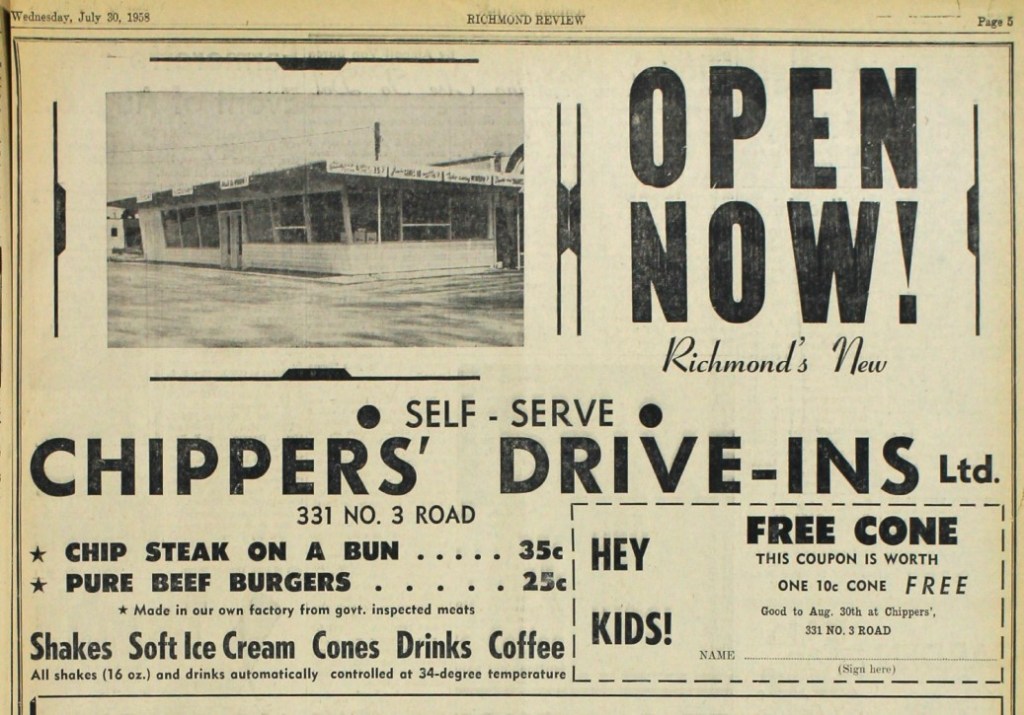
Chipper’s was the first “American Graffiti” style drive-in in Richmond. It was very popular meeting place with the young crowd, frequented by hot rodders and drag racers and was the terminus/turn around point for people cruising the No.3 Road strip. Chipper’s advertised a variety of food, from chipped steak on a bun and beef burgers (Made in our own factory from government inspected beef), all you can eat waffles for seventy-five cents (the ones they had in mind when they invented syrup), nineteen cent burgers (Take home a dozen!) and pizza by Tevie (The King of Pizza). Owner/operator Tevie Smith promoted his business actively, using advertising space in the Richmond Review frequently and by sponsoring bowling teams at the Skyway Lanes next door while offering ice cream and burgers as prizes.
Not all of the advertising for Chipper’s was good. In April of 1962 reports of bad behavior and hooliganism by unruly customers were common and led to the Municipal Licensing Committee and the RCMP meeting with one of the owners of the restaurant regarding disturbances at the drive-in. The owner promised the Committee that he would clear up the problem immediately and the Committee in turn promised that they would “keep in close touch with the situation.”

The warnings must have had an effect because the drive-in remained in business until the early 1970s and remains a nostalgic memory in the minds of folks who were young during that era.
Kings Burgers
An article in the January 25,1962 Richmond Review announced “Two new drive-ins to be built here”. One of the new facilities was Kings Burgers to be built on Westminster Highway near the intersection with No.3 Road. Kings Drive-In Ltd. was a successful Lower Mainland chain that opened six locations around Vancouver, North Vancouver, Burnaby, Surrey and Richmond. The property that the Richmond location was built on first had to be rezoned from agricultural district to general commercial, with a special use permit as drive-ins were not included in that category.

Like Chipper’s, Kings Burgers became a well loved and popular drive-in, especially with younger people. Driving by the restaurant gave a view of hot rods, sport cars and modified vehicles, hoods up in the parking lot. No doubt many strips of rubber marked the exit from the drive-in’s parking area.

Kings’ menu was also typical of drive-ins of the period. Burgers, fries, fish and chips with an apple turnover for dessert pretty much covered it. The restaurant’s “Kingburger”, prepared in advance and kept in a heated drawer, was its most popular item at 19 cents each.

Kings did not escape the stigma of having young people as a large part of its customer base. In June 1966 the Richmond Review reported “HOODLUM VICTIMS PROTEST,” detailing complaints from the Royal Canadian Legion, located across the street from the drive-in, about willful damage caused by the “young element”. The Legion claimed that groups gathering outside the restaurant would move across to the Legion and break into cars and destroy property. “They have no regard for private property,” the Legion protested. The Municipality’s Licensing Committee agreed to seek the cooperation of the drive-in’s management to combat the problem.

From late 1976 to early 1977 the Kings underwent renovations and began to look less like a drive-in and more like a regular restaurant. Around 1981 the name was changed to “Big B” Burgers and later around 1986 it became Umbertino’s Pasta Palace. In 1987 the location is listed as “Vacant” in the street directory.
The A&W
The other restaurant mentioned in the January 25, 1962 Richmond Review was an A&W drive-in, to be built on the west side of No.3 Road just south of Capstan Way. The A&W did not have an easy start in Richmond. The first hurdle encountered were delays in rezoning the property where it was to be built. Although announced in January, by April rezoning was still being squabbled about by the Municipal Planning Committee with some wanting to delay for another year. Representatives for the A&W were upset, saying that they had been all but guaranteed of the rezoning eight months earlier. The delay was partly in response to a public outcry over perceived problems arising from the project. Under a headline which read “Rootbeering teens bring angry protest,” an article in the Richmond Review said that Council had been petitioned by an angry group of homeowners who claimed that allowing another drive-in to open in their neighbourhood would affect property values, add to litter problems, attract undesirable types of teenagers and keep residents awake at night. Most of these problems already exist to some extent because of the existing drive-in (Chippers). “It’s not an environment that I want for my boys”, said one protester. “Young hot rodders and young fellows and girls acting in an unbecoming manner. We see enough of this already”. Despite protests and zoning application issues the restaurant opened at its location at 359 No.3 Road (3591 today) and became another popular location for youth and car enthusiasts. The drive-in provided full carhop service, occasionally with the servers on roller skates, delivering food on the iconic window trays with tall, frosty mugs of root beer.

Like many large drive-in chains, A&W got its start in the United States in 1919 when Roy W. Allen set up a stand selling root beer at a parade in Lodi, California. In 1923 he and his partner Frank Wright opened the first A&W restaurant in Sacramento. A&W grew their business, selling franchises throughout the United States and expanded into Canada in 1956. By 1960 there were 2000 A&Ws in operation. In 1972 the Canadian side of the business split from the American chain and became its own corporate entity. The No.3 Road A&W Drive-in closed around 1982 but today there are nine A&W outlets in Richmond.
Ernie’s Take Home – Kentucky Fried Chicken
Harland David Sanders began selling chicken dishes from a restaurant in Kentucky during the Great Depression. By 1940 he had developed his patented “secret recipe” for cooking chicken in a pressure fryer, allowing faster cooking than regular frying. In 1952 Sanders, by now a “Kentucky Colonel” commissioned by the Governor of Kentucky, began offering franchises for his “Kentucky Fried Chicken”. In the 1950s Nat Bailey was offered the British Columbia franchise for Kentucky Fried Chicken. While he was worried that the brand might compete with his White Spot chain, which also offered chicken dishes on the menu, his partners convinced him that the product was different enough to not cause any issues. Bailey and his partners formed a separate company called Ernie’s Fine Foods which was named after Ernie M. Creamer, Bailey’s friend and partner who was to head the new enterprise. Six stores were opened in Vancouver, Victoria, New Westminster, North Vancouver, Penticton and Richmond under the name Ernie’s Take Home. The Richmond store opened in a unit at the Hyland Park Shopping Centre at 632 (6320 today) No.3 Road.

Colonel Sanders came to Vancouver to meet his new business partners after they had opened three of their franchises. He was described as a “real southern gentleman”, wearing his trademarked white suit, string tie, goatee and cane and kissing all the ladies’ hands. Unlike other Kentucky Fried Chicken franchises, Bailey and his partners served their own style of potato salad, macaroni salad, coleslaw and biscuits, apparently with the Colonel’s approval.
Nat Bailey sold his restaurant businesses to General Foods in 1968, including the company’s six Ernie’s Take Home locations. By the early 1970s they had closed the Hyland Park location, reopening in a red and white striped drive-in style restaurant at 810 (8100 today) Anderson Road, on a lot that spanned the area between Anderson Road and Granville Avenue. In 1984 the restaurant had changed its address to 8111 Granville Avenue, rebranded as Kentucky Fried Chicken, without the Ernie’s Take Home name, and had installed the iconic bucket of chicken signpost to attract customers driving down busy Granville Avenue. A second location at the Seafair Shopping Centre opened the same year. Today there are four KFC outlets in Richmond.
McDonald’s
In 1960 Ray Kroc took over a restaurant run by the McDonald Brothers in Sacramento California and the rest is history. Over the next five years Kroc transformed the business, opening hundreds of locations featuring unique architecture and high efficiency kitchens serving inexpensive meals, and turning McDonald’s into a public company listed on the New York Stock Exchange. In 1967 Kroc took his business outside of the United States for the first time, opening a restaurant at 712 (7120 today) No.3 Road in Richmond on June 1. George Tidball was in charge of the Canadian inaugural operation, and Richmond was chosen because, according to Kroc, it was a community of many young adults in the middle income bracket. The chain was distinguished by its 18 cent hamburger, ” formula boneless chuck and plate beef, 10 hamburgers to the pound,” and a “Triple thick” 25 cent milkshake.
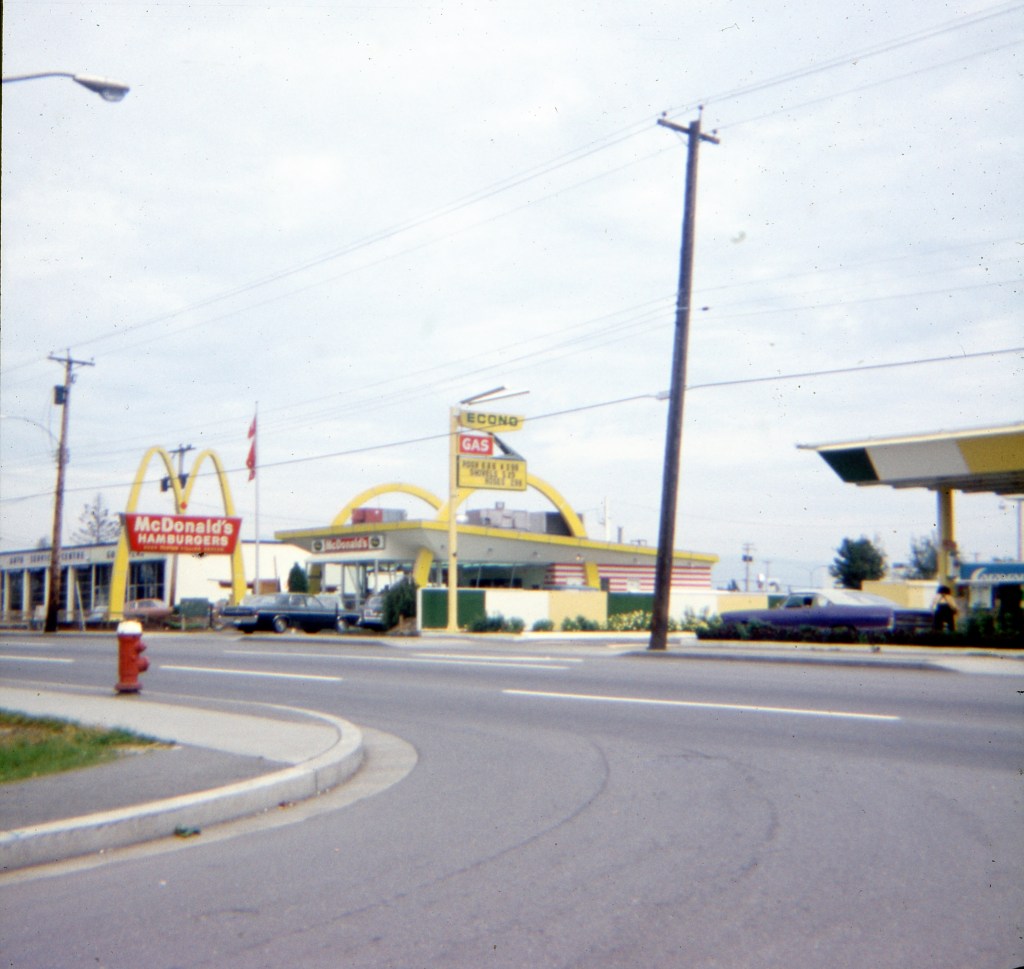
McDonald’s was notable, not only for its unique architecture and cheap meals, but also for its lack of some other things. There were no juke boxes or cigarette machines, “They don’t enhance the image we want,” said Kroc. Also, there were no telephone booths or female employees, “Girls and telephones are distractions.” Ray Kroc explained, “We are not interested in motorcyclists, hot rodders or rock and rollers unless they come on our terms. We run a clean place that welcomes families, boy scouts, church and civic groups.”
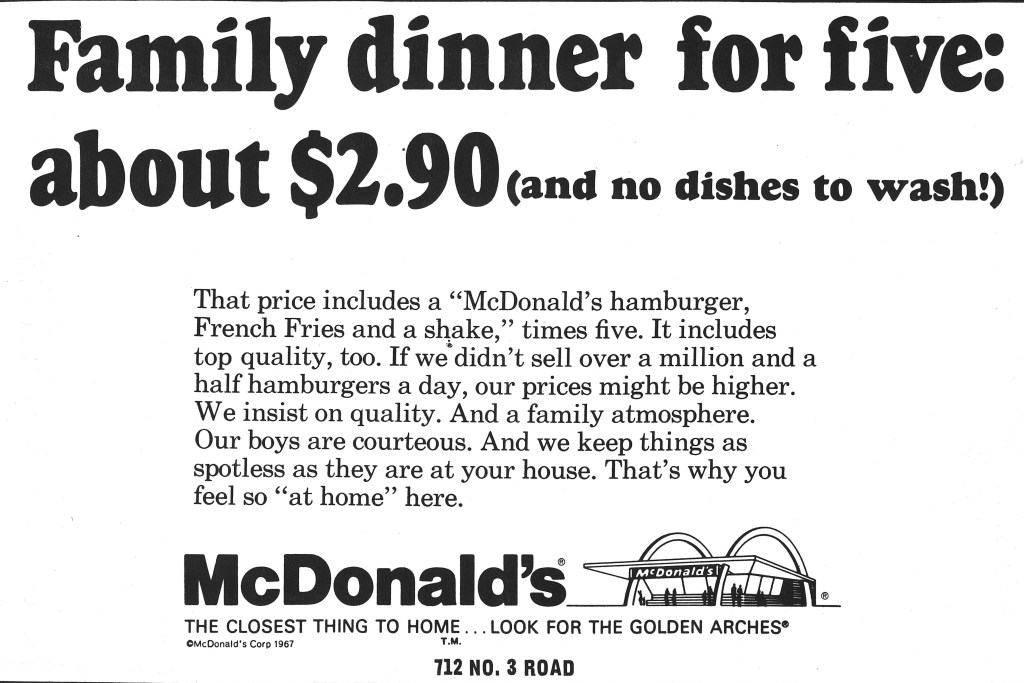
George Tidball stated that the Richmond restaurant provided fulltime employment for 36 young people, adding that one out of every five applicants passed the rigid requirements for the job, a much higher amount than in the United States: “Richmond seems to have a greater number of neat-appearing, responsible, clean-cut type of youth.”

Ray Kroc made a whirlwind trip to the Richmond McDonald’s the month after it was opened, staying for about a half hour to look over the operation, speak to the press and have a photo-op. Then he was gone, planning the opening of other restaurants around Canada.

In 1975 the original drive-in was replaced by a larger, more modern building with room for indoor seating, a play area, and eventually, a drive-thru window ending its state as a drive-in. The restaurant has since been replaced by a third building on the property but the original 1967 Golden Arches are still there attracting drivers into the the place. Today there are seven McDonald’s locations in Richmond, but only one can claim to be the location of the first outside the United States. There are still no cigarette machines or juke boxes, but everyone has a telephone in their pocket and women are allowed to work there now.
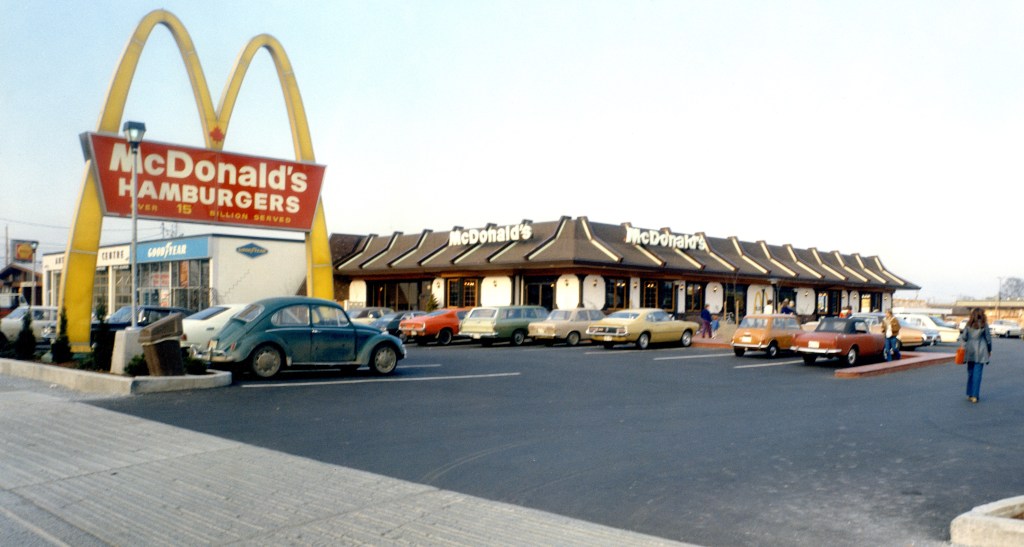
White Spot
Nat Bailey got his start selling hot dogs and ice cream from a converted Model T Ford truck in Stanley Park, probably Vancouver’s first food truck. He opened the first White Spot Restaurant in Marpole in 1928, a place which was probably the first drive-in restaurant in Canada. Bailey and his partner Bob Stout are also credited with developing the world’s first drive-in food tray, originally a white-painted cedar plank which was placed across the space between the driver’s and passenger windows, modernized later using plastic and steel. White Spot was also probably the first drive-in to employ carhops to serve customers in their cars.

Bailey retired from the restaurant business in 1968 after building and expanding the chain into one of the best-loved restaurant/drive-in chains in BC. When he retired he sold the business, which included 13 White Spot Drive-In/Dining Room Restaurants, six Kentucky Fried Chicken franchises and other assets such as BC’s largest chicken farm, to General Foods. General Foods was based in New York State with a Canadian office in Toronto. The company immediately started to expand the business building new restaurants. Around 1975 they built Richmond’s last true drive-in at 814 Granville Avenue.

The restaurant offered both dining room and carhop service, with all the favourite White Spot menu items available. Around 1999 the Granville Avenue restaurant closed, replaced by other non-drive-in locations around town. Today there are three White Spot Restaurants in Richmond with an additional two Triple O’s franchise locations.

By the 1970s drive-ins were being replaced by drive-thru restaurants which didn’t require as much parking space and, as carhops became obsolete, could be run by fewer employees. There are a few old style drive-ins remaining, but they have become a thing of the past for the most part.
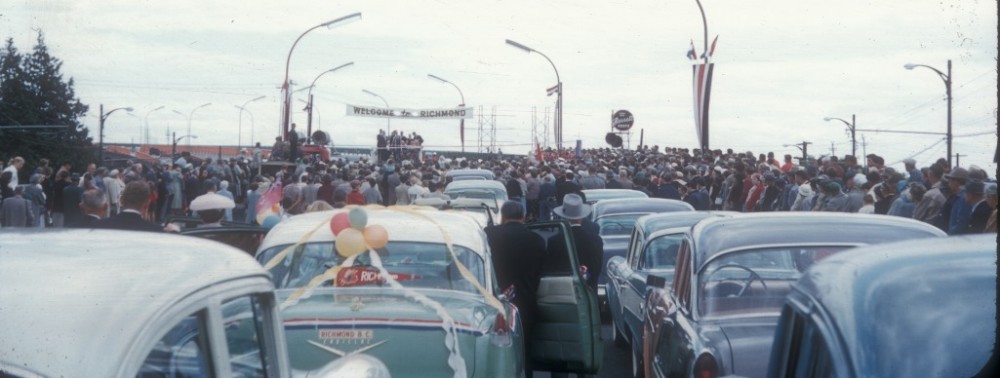


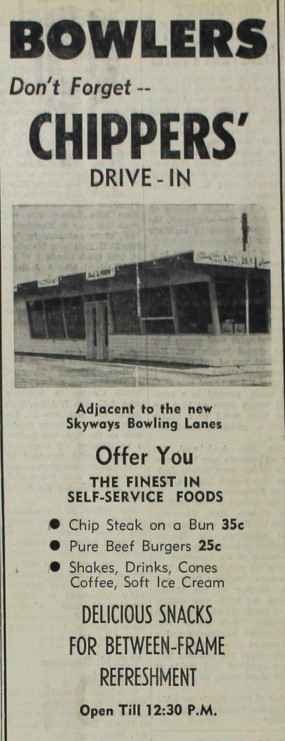

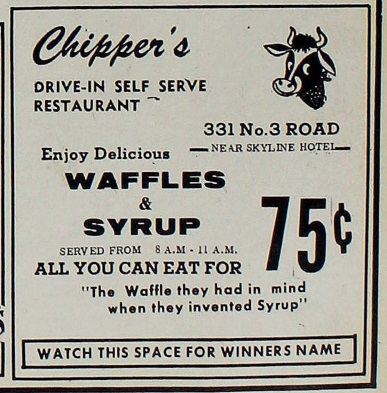
You must be logged in to post a comment.